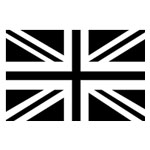Garden storage sheds a comparison
Small domestic sheds
The simplest and least expensive sheds are available in kit form. Both shed kits and "do-it-yourself" plans are available for wooden and plastic sheds. Sheds are used to store home and garden tools and equipment such as push lawn mowers, lawn tractors, and gardening supplies. Inaddition, sheds can be used to store items or products that are not suitable for indoor storage, such as gasoline, pesticides, or herbicides.
A metal garden shed made with sheets of galvanized steel over a steel frame
For homes with small gardens or modest storage needs, thereare several types of very small sheds. These include corner sheds, which fit into a corner (3ft tall x 3ft wide x 2ft deep), vertical sheds (5ft tall x 3ft widex 4ftdeep), horizontal sheds (3ft tall x 5ft wide x 4ft deep), and tool sheds. Whena shed is used for tool storage, shelves and hooks are often used to maximize the storage space. Gambrel-style roofed sheds, which resemble a Dutch-style barn have a high sloping roofline which increases storage space in the "loft". Another style of small shed is the saltbox-style shed.
Larger domestic sheds
A tall shed with windows and a shingled roof
Larger, more expensive sheds are typically constructed of wood and include features typically found in house construction, such as windows, a shingled roof, and electrical outlets. Larger sheds provide more space for engaging in hobbies such as gardening, small engine repair, or tinkering. Some sheds have small porches or include furniture, which allows them to be used for relaxation purposes. In some cases, teleworkers and homeworkers in general who live in mild climates use small- to medium-sized wooden garden sheds as outdoor offices. There is a growing industry in providing "off the peg" garden offices to cater for this demand,particularly in the UK but also in theUS.
Shed owners can customize wooden sheds to match the features(e.g., siding, trim, etc.) of the main house. A number of decorative options can be added to sheds, such as dormers, shutters, flowerboxes, finials, andweathervanes. As well, practical options can be added such as benches, ramps,ventilation systems (e.g., in cases where a swimming pool heater is installed in a shed), and electric lighting. Sheds designed for gardening, called "potting sheds", often feature windows or skylights for illumination,ventilation grilles, and a potter's bench for mixing soil and re-potting plants.
Specific-use sheds
Garden sheds: The vast majority of sheds are garden sheds, including allotment sheds. This class of sheds also includes potting sheds and tool sheds. Most modern gardens are too small for more than a single shed, containing garden tools and lawn mowers.
Bike sheds (also called bicycle sheds) usually contain a framework on which bikes can be supported and locked. Bike sheds range from little more than a supported roof to more complex structures with walls and locking doors.
Boat sheds (also called boatsheds)are lockable wooden sheds built near a body of water to store small private boats, bathing suits, and related items. Boat sheds used for rowing clubs arelarge structures for storing skiffs.
Agricultural sheds
A hay shed typical of Australia and New Zealand(otherwise known as a barn)
Farm sheds and other outbuildings are used to store farmequipment, tractors, tools, hay, and supplies, or to house horses, cattle,poultry or other farm animals. Run-in sheds are three-sided structures with anopen face used for horses and cattle.
Shearing sheds can be large sheds found on sheepstations to accommodate large-scale sheep shearing.
Railway sheds
Engine sheds are structures used for the maintenance or storage of railway locomotives. In Britain these are also called motive power depots.
Goods sheds are railway buildings designed forstoring goods before or after carriage in a train.
Train sheds are buildings adjacent to a railway station where the tracks and platforms are covered by a roof. Thefirst train shed was built in 1830 at Liverpool's Crown Street Station.
Snow sheds are strongly built timber or reinforced concrete tunnels that protect railroad tracks (or roads) from avalanches.
Miscellaneous sheds
In 19th century military barracks, shedswere used as auxiliary buildings for various purposes. The Royal Artillery park barracks in Halifax used sheds asgun sheds, carriage sheds, repair sheds, wheel sheds, wagon sheds and storagesheds.[1]
Arena
A simple open roof structure, or a partially walled or fully enclosed large under cover area. Can be used for horse riding equestrianvenues. Providing all year usage of the facility with protection from theweather.
Construction
The main types of shed construction are metal sheathing overa metal frame, plastic sheathing and frame, all-wood construction, andvinyl-sided sheds built over a wooden frame. Each type has various advantagesand disadvantages that a homeowner has to consider. For example, while metalsheds are fire and termite-resistant, they can rust over time, or be severelydamaged by high winds. The International Building Code(IBC) defines a shed as abuilding or structure of an accessory character; it classifies them underUtility and Miscellaneous Group U (Chapter 3 Section 312).
Metal sheds
A corrugated iron shed
Metal sheds made from thin sheet metal sheathing (galvanized steel, aluminium, or corrugated iron) attached to a metal frame.Metal sheds are a good choice when long-term strength and resistance to fire,rot, or termites is desired. However, metal sheds may rust over time,particularly if they are constructed from steel that is not galvanized. Beaware that concrete is highly corrosive so care needs to be take when assembling your shed to avoid contact with the outside panels.[2]
As well, some types of metal sheds that have thin walls areeasily dented, which may makes some types of thin metal sheds a poor choice for vandal-prone areas or for high-traffic activities such as small businesses. Incold climates, metal sheds with thin walls need to have snow and ice clearedfrom the roof, because the thin metal may be damaged by a heavy accumulation.Since thin metal sheds weigh much less than wood or PVC plastic sheds, thinmetal sheds are more at risk of being damaged by heavy winds. To prevent winddamage, thin metal sheds should be attached to a concrete foundation withscrews.[3]
Plastic sheds
Lifetime blow-molded plastic sheds
Plastic shed kits utilizing heavy molded plastics such as PVC and polyethylene are less expensive than sheet metal sheds. PVC resins and high-impact, UV light-resistant polyethylene make plastic outdoor sheds stronger, lighter, and more durable and more resistant todenting and chipping than wood, and tend to be more stable.
Plastic shed kits sided with vinyl are typically among the least expensive types of shed construction. Higher-quality sheds use UV-resistant plastic and powder-coated metal frames. Many plastic sheds are modular to allow for easy extensions, peg-boards, shelving, attic-storage,windows, skylights, and other accessories to be added later.
Plastic sheds are not susceptible to termite and wood-boring insect damage, and they require little maintenance. Being rot-proof they do not need to have preservative applied.
Wooden sheds
Domestic wooden sheds
Wooden sheds have a natural look that can blend in well with garden environments. Despite the strength of wood, over time untreated and neglected wood can rot, split, warp or become susceptible to mold and mildew, so wood sheds should be treated for protection. Wood sheds need regular maintenance,such as keeping plant matter and debris from piling up beside the walls and onthe roof, and occasional rot-proofing with preservative. Sheds are sometimes also re-stained or varnished at times for aesthetic reasons. Fire, and in some countries termite attack,are also potential problems.
Stains and preservatives can be applied to wood sheds to prevent damage to the wood caused by exposure to rain, damp ground, UV light, harsh climatic conditions, fungal attack and wood-boring insects. If a colored preservative oil or stain is used, a wooden shed can either be made to standout as a feature within a garden, or to blend in with its surroundings. Redcedar coloured stain is popular. Some types of wood, such as cedar, are more naturally-resistant to water damage. One advantage of using wood sheds is thatit is easier to modify wooden sheds (i.e., than metal sheds) by adding windows,doors, shelving, exterior trim etc., because wood can be cut and drilled using commonly-available tools. Some homeowners may prefer wood sheds because wood isa renewable resource.
Vinyl-sided shed
Vinyl-sided sheds are typically built with standard wood framing construction and oriented strand board (OSB) on the walls covered with standard vinyl siding. Vinyl-sided sheds never need to be painted, they are generally stronger than plastic or metal sheds, and are usually built toconform with the local building codes. They are not eco-friendly and they cost more than wooden, metal or plastic sheds.
Asbestos sheds
In the early and middle years of the 20th century many garden sheds and domestic garages were made of asbestos-cement sheets supported on a very light angle iron frame. Concerns about safety led tothe practice being discontinued, but they were cheap and long-lasting and manycan still be seen in British gardens. Advice on continued use or disposal isavailable.[4]
Shed of the Year
Founded by Andrew Wilcox, also known as Uncle Wilco, forso-called "sheddies" - fans of sheds - the Shed of the Year competition seeks to find the most quirky and unique shed in the UK, with thewinner being celebrated in Shed Week, which takes place in the first week ofJuly and his run by the website readersheds.co.uk
The first National Shed Week was held in the UK in July 2007and received widespread coverage in the media, the winning shed was a normal one converted into a RomanTemple. National Shed Week in 2008, was another great success with Shed ofthe Year winner being a hand built octagonal Pub Shed.
National Shed Week in 2009, had a winning shed that was a cabin on stilts called the KiteCabin from West Wales.
Since 2010, the National Shed of the Year competition has been sponsored by garden woodcare brand Cuprinol. The winning shed that year was a pirate-themed shed called The Lady Sarah out of Worthing
Shed of the Year 2011 is open for entries - the closing date is 16th May2011





















